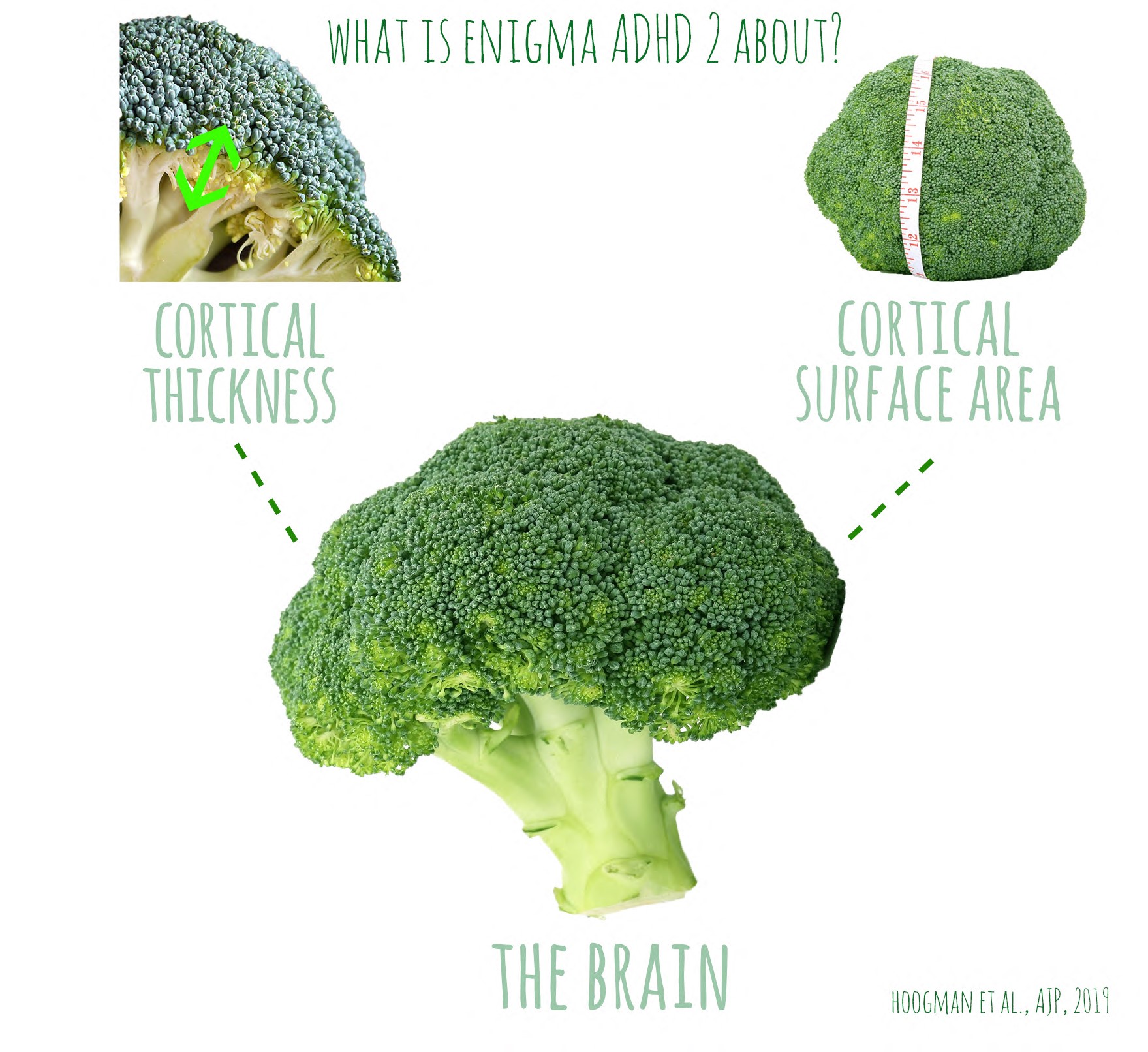
Do you sometimes find it difficult to pay attention? Can you be very disorganized at times, or very rigid and inflexible? Although difficulties with attention, organization and rigidity are symptoms of psychiatric disorders, these traits are not unique to people with a diagnosis. And that is very useful for studying the genetics of psychiatric disorders.
Being easily distracted, liking things to go in a certain way, having a certain order in the way you do things, these might all be things you recognize yourself (or someone you know) in, while you (or they) are not diagnosed with any psychiatric disorder. We actually know that many of these symptoms are indeed found in a range in the general population, with some people showing them a lot, some a little and some not at all. If these symptoms are also present in people without a diagnosis then why should we only study people with a diagnosis to learn more about the biology of symptom-based disorders?
Many psychiatric disorders, like attention-deficit/hyperactivity disorder (ADHD) and autism spectrum disorder (ASD) are disorders that ‘run in the family’. Using family-based and genetic studies it was found that they are actually highly heritable. However the underlying genetic risk factors turned out to be difficult to find. Enormous samples sizes (comparing more than 20 000 people with the disorder to even more individuals without the disorder) were needed to robustly find just a few genetic risk factors, although we know that many more genetic factors contribute. Even though these disorders are highly prevalent, collecting genetic data on psychiatric patients for research is still challenging. Using population-based samples – that include all varieties of people from the general population – can be a good alternative to reach large sample sizes for powerful genetic studies.
Taking together the fact that psychiatric-like symptoms are also, to a certain degree, present in the general population, and the fact that genetic studies can benefit from large(r) sample sizes to find genetic associations, it can be very interesting to study psychiatric-like traits in population-based samples. This is indeed what happened in the field of psychiatric genetics. The first proof-of-concept studies were able to show an astonishing overlap in genetic factors of more than 90% between ADHD and ADHD symptoms in the general population. Our own research group was able to show that certain autistic traits, like rigidity, indeed share a genetic overlap with ASD and that genes that were previously linked to ASD show an association to autistic traits in the population. These results show that genetic factors involved in disorder-like traits are overlapping with genetic factors involved in the clinical diagnosis, and therefore can indeed be used to study the biology of psychiatric disorders.
So next time you feel distracted/rigid/disorganized, don’t get discouraged, but consider signing up for a genetic study. Science might need you!
Janita Bralten is a postdoctoral researcher at the department of Human Genetics in the Radboud university medical center, Nijmegen, the Netherlands. Her research focusses on the genetics of psychiatric disorders.
Further reading:
Bralten J, van Hulzen KJ, Martens MB, Galesloot TE, Arias Vasquez A, Kiemeney LA, Buitelaar JK, Muntjewerff JW, Franke B, Poelmans G. Autism spectrum disorders and autistic traits share genetics and biology. Mol Psychiatry. 2018 May;23(5):1205-1212.
Middeldorp CM, Hammerschlag AR, Ouwens KG, Groen-Blokhuis MM, Pourcain BS, Greven CU, Pappa I, Tiesler CMT, Ang W, Nolte IM, Vilor-Tejedor N, Bacelis J, Ebejer JL, Zhao H, Davies GE, Ehli EA, Evans DM, Fedko IO, Guxens M, Hottenga JJ, Hudziak JJ, Jugessur A, Kemp JP, Krapohl E, Martin NG, Murcia M, Myhre R, Ormel J, Ring SM, Standl M, Stergiakouli E, Stoltenberg C, Thiering E, Timpson NJ, Trzaskowski M, van der Most PJ, Wang C; EArly Genetics and Lifecourse Epidemiology (EAGLE) Consortium; Psychiatric Genomics Consortium ADHD Working Group, Nyholt DR, Medland SE, Neale B, Jacobsson B, Sunyer J, Hartman CA, Whitehouse AJO, Pennell CE, Heinrich J, Plomin R, Smith GD, Tiemeier H, Posthuma D, Boomsma DI. A Genome-Wide Association Meta-Analysis of Attention-Deficit/Hyperactivity Disorder Symptoms in Population-Based Pediatric Cohorts. J Am Acad Child Adolesc Psychiatry. 2016 Oct;55(10):896-905.
If you are interested in joining a scientific study see for example:
or
https://www.impactadhdgenomics.com/patienten/nl/deelnemen (Dutch only)










